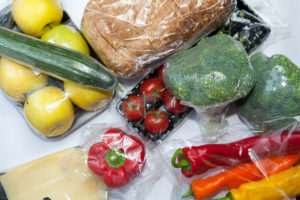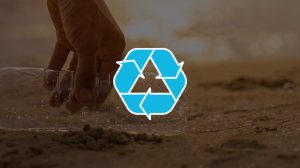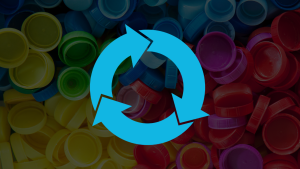Opinion: Put a price on Canada’s plastic waste, not its advanced chemistry
For decades, Canadians have strongly advocated for protecting our environment rich in natural beauty and admired globally. When it comes to plastics, this sentiment is no different.
The Canadian government is considering passing a regulation against plastic. It wants to use the Canadian Environmental Protection Act, or CEPA, to regulate the production and use of plastics in Canada by labelling it “toxic.” A quick read of that policy may lead you to believe it’s thoughtful and oriented to action, but in actuality it lacks scientific, environmental and economic integrity.
A policy on plastic waste should follow three basic principles.
First, do what is best for the environment. A CEPA toxic label only makes recycling harder and more complex, imposing unnecessary compliance prohibitions on the very incentives for cleaning up, recycling and repurposing waste. Science tells us that most alternatives to plastic are more costly and typically have significantly higher carbon footprints, and are often far less benign in their use and in waste management.
Canadians want a real commitment to deal with plastic waste, not a label on plastic that undermines the right policy incentives for recycling and a circular economy. Today, less than 8 per cent of plastic waste is recycled while 86 per cent of plastic waste ends up in landfills. The environmental incentives for dealing with this problem are obvious. So is the circular economic opportunity as we experiment with how to repurpose products from recycling: The estimated potential recycled value of our current plastic waste is more than $8.6-billion.
Innovation based on research and science, complemented by sound public policy, can help Canada move to the forefront of the global plastics circular economy. The recently announced Varennes Carbon Recycling project, a $800-million joint venture led by Montreal-based Enerkem and partners Suncor, Shell and Proman, converts municipal waste to low-carbon fuel. The project follows an earlier generation of the same technology pioneered at the Edmonton Waste Management Centre, and the next generation of recycling facilities is going even further: converting waste plastic into low-carbon plastics and sustainable fuels.
If the toxic label sticks, these kinds of environmental innovations will simply occur outside of Canada.
Second, a commitment to scientific integrity. Using scientifically inaccurate but florid language such as toxic – which means poisonous – for dramatic effect is typical of political rhetoric. But it is deeply damaging when used for policies that guide complex scientific production or normal use. The advanced chemistry used to create plastic (and dozens of other essentials) is found in almost everything we use: from our phones and laptops and TVs, to our kitchens, furnishings and sports equipment.
It is impossible to find adequate substitutes for it in thousands of life-critical applications, from hospital and lab equipment to space suits and electric vehicles. Treating plastic in the same category of known contaminants such as mercury, arsenic, lead or asbestos is deeply unscientific. As a result, it creates long-term future liabilities for the scientific management of waste and the critical development of the chemistry industry and its advanced materials breakthroughs in Canada.
The third principle that should guide this policy is to replace punitive language with partnership, embracing Canada’s world-leading chemistry industry to help manage plastic waste and create a circular economy. The government lacks the scientific, engineering and research and development expertise this industry can help provide to develop national leadership on environmental and waste innovations.
Canada’s chemistry industry is more than a century old and has led on sustainability. Thirty-five years ago, the Chemistry Industry Association of Canada’s 1985 sustainability initiative was adopted by the United Nations as a global best practice. This industry has achieved a national reduction in their greenhouse gas emissions of 67 per cent since 1992 while growing to 87,000 high-tech, high-wage jobs, creating $50-billion in commercial value each year.
Using unscientific language that drives offshore the crucial expertise and investment from the fastest-growing industrial sector in North America isn’t just bad for solving our plastic landfill problem, it’s also a step backward economically. Decision makers at the world’s leading chemistry firms have already put on hold new or expansion projects in Canada worth more than $28-billion this year as they wait to see the outcome from this policy debate.
These firms can go anywhere. If we use CEPA to enforce a non-science-based liability on them by using toxic to define one of their most important and innovative lines of research and production, they will quietly walk away from our country and reinvest elsewhere. This would be a massive unforced error.
These are some of the world’s most advanced scientific firms. Their extraordinary depth of investment in global talent and patient capital drives scientific research and discovery at the same rate as some of the largest universities in the world. Their investments, jobs and innovations will simply happen in other countries. Canada will be left, as in so many other areas, to import products and solutions we could have made here.
The final principle of this, and several other policies regarding presumed tradeoffs between the environment and the economy, should be transparency to Canadians. Calling plastic toxic sounds like a dramatic commitment to the environment, but Canadians deserve transparency about the environmental and scientific implications of using an unscientific label like this.
They also deserve to know the alternative: public-private partnerships with some of the best scientific firms in the world to take action on plastic waste, creating a circular economy with jobs and innovations that stay here.



